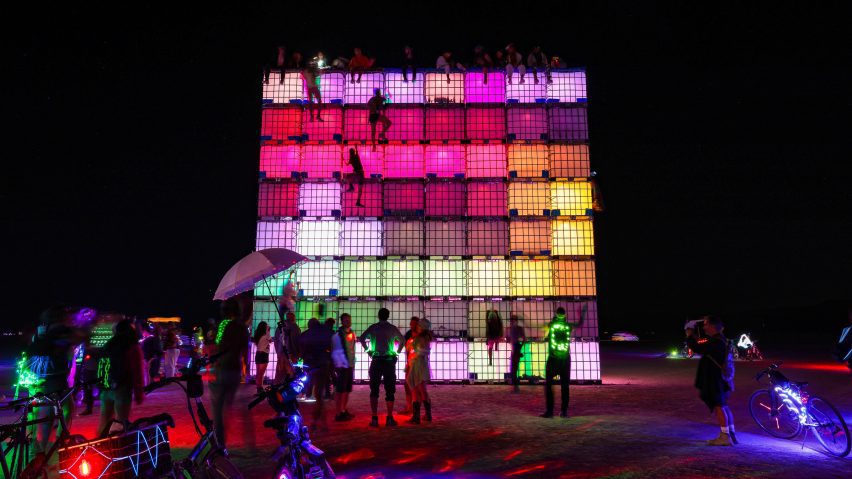
Eleven installations from this year's "Animalia" Burning Man festival
An oversized chalice and a light show constructed from water containers were among more than 400 art installations at this year's Burning Man festival. Here are 11 of the most interesting.
This year's theme of Animalia aimed to pay homage to the animal kingdom and human's role within it. Dezeen has rounded up the most architecturally intriguing of the installations that were placed among the DIY sculptures of robots, birds and flying horses.
The annual festival was met with controversy this year, as a coalition of climate protesters pushed back against the festival's consumerism and destruction of its desert site, despite the festival purporting a "leave no trace" policy.
While protestors blockaded the entryway to the event, creating even longer waiting times to get into the festival, a bout of heavy rain created delays on the way out, forcing some burners to leave early and the delay of the burning of the event's central effigy.
Read on to see 11 of this year's installations.
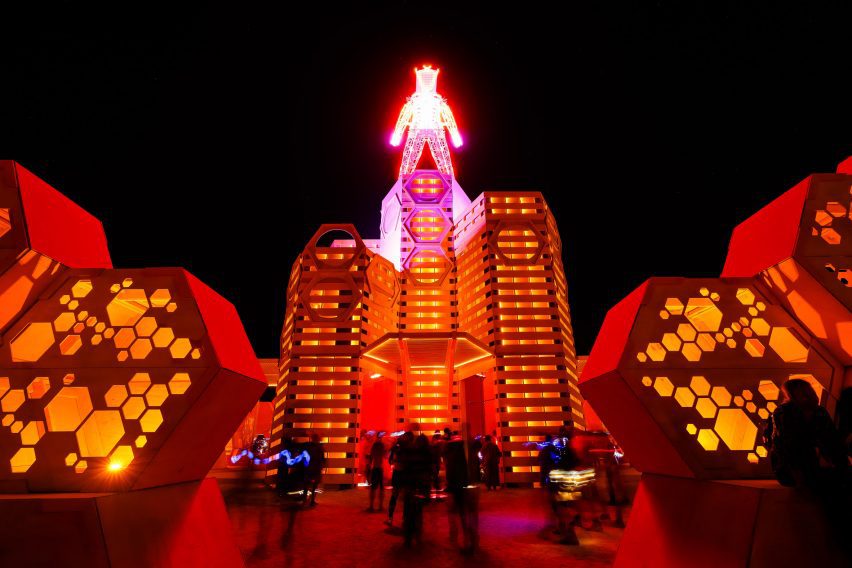
The Hive by Tim Bremner
For the Burning Man festival, the central "man" pavilion serves as both an effigy and a central plaza. This year's pedestal for the man, designed by Oakland-based artist Tim Bremner, took the form of a hive, with interlocking wooden hexagons stacked on top of one another.
"Like a proper bee colony, we burners all have our roles and exist in a beautifully designed place," said Bremner.
"This year the theme lines up nicely with what we've always been… one big-ass dusty beehive of applied creativity."
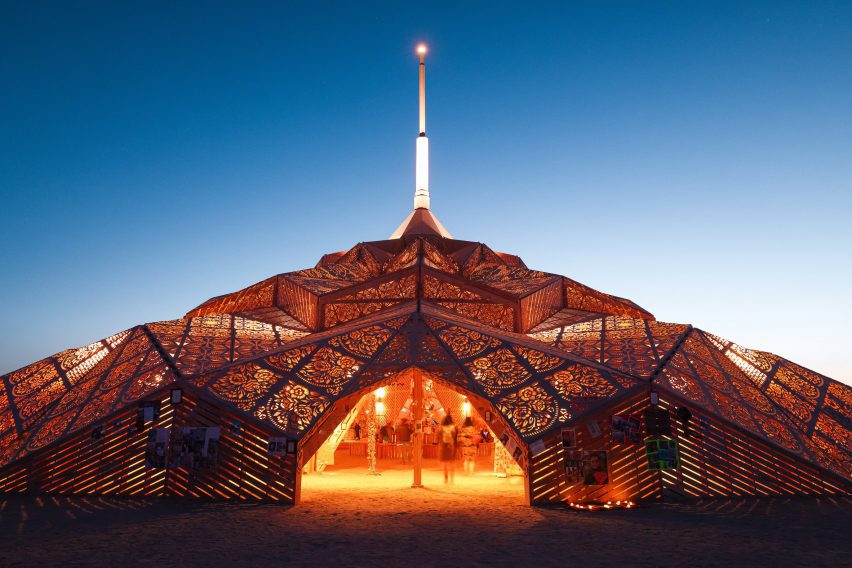
Temple of the Heart by Ela Madej and Reed Finlay
This year's official temple was designed in the image of "an upside-down desert flower with a stem pointing up into the sky".
The all-wood, lattice structure by Ela Madej and Reed Finlay was created using CNC machines and took over two weeks to assemble once its pieces arrived at the Burning Man site.
Created to be a place of meditation and mourning, the temple was burned during the last hours of this year's event.
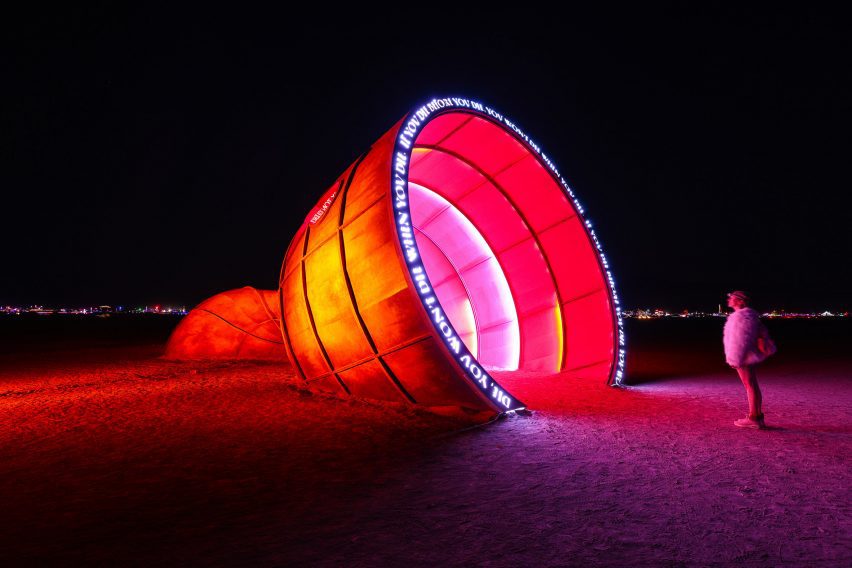
Chalice to Eleusis by Hunter Leggitt, Jonathan Berry and House of Fābl
The Chalice to Eleusis sculpture was designed in the image of a kykeon – a psychoactive drink that was used during celebrations of an ancient Greek cult.
The oversized sculpture was built to look like a cup freshly unburied from the sand, exposing Eleusinian knowledge.
"Encased underground and locked away in hidden libraries for nearly two thousand years, the mysteries of our cultural roots are now finally being exposed," said the team.
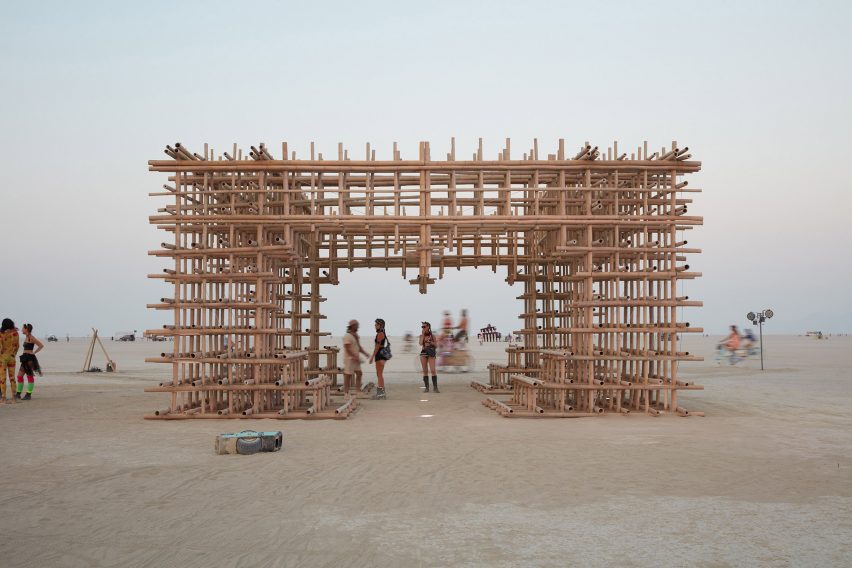
Heartburst by (OU) Officeuntitled
More than 880 bamboo poles shipped from Malaysia were used to create this rectangular gateway by (OU) Officeuntitled co-founders Benjamin Anderson, Christian Robert and Shawn Gehle.
According to the team, the material was chosen for its "grounding" qualities. They estimated that the poles used for the sculpture had a carbon sink of -7.5 metric tons of CO2 – the equivalent to the annual carbon footprint of a US household.
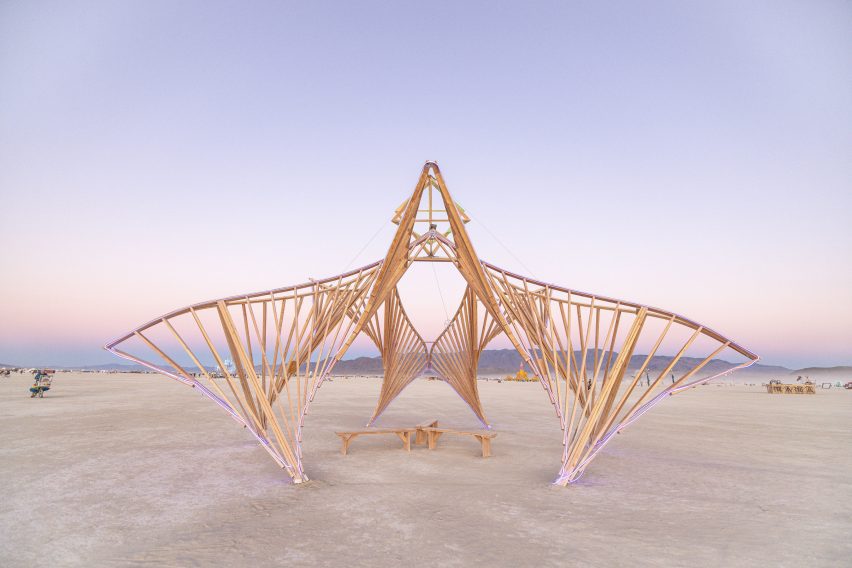
The Reactor Project by Assaf Allouche
Constructed from stripes of wood and lined with LED lights, the Reactor Project acted as space for burners to rest and connect.
"It is a vessel which enables beautiful minds to encounter and react with each other – simply having fun and spreading positive reaction," said the team.
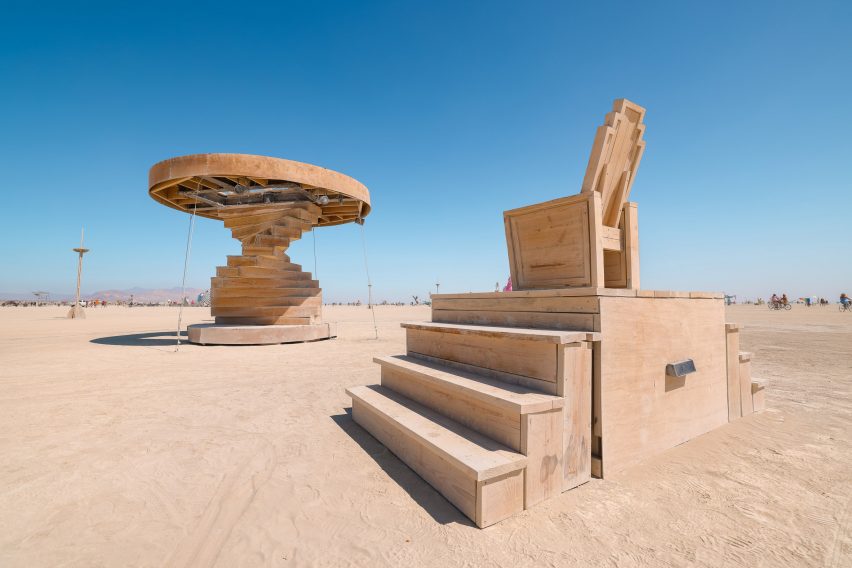
Build a Seat 2.0 by Mo Osunbor
The Build a Seat project showcased a number of wooden seats designed by a collective of Black artists placed around an oversized table.
The pieces were interactive, with the helix-shaped base of the table doubling as a spiral stair to the top.
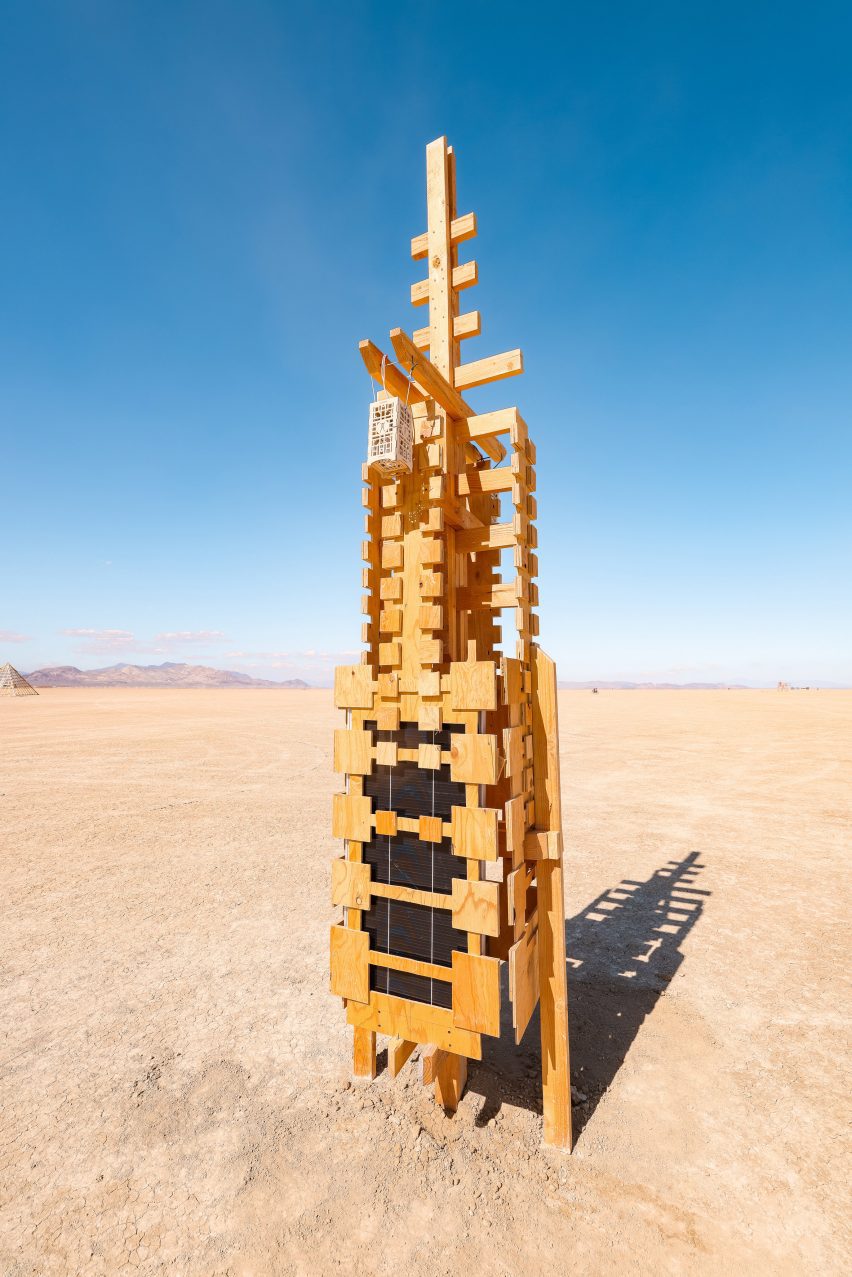
Masterpiece #999 by Benjamin Rowe
Described as a "specture in the dust", Masterpiece stood twice as high as a human.
The most recent project from designer Benjamin Rowe, the wooden sculpture is "the latest in a long line of projects exploring the potential for simple materials to communicate geometrically artistic messages".
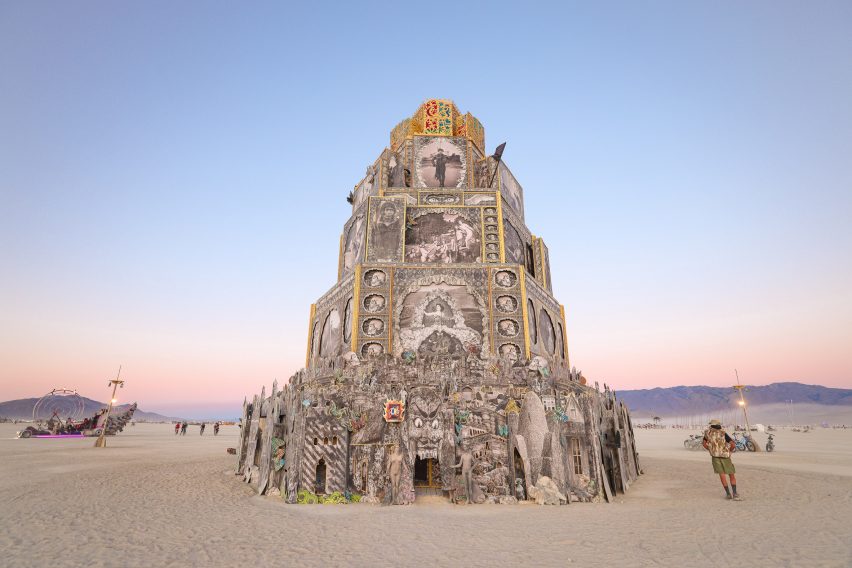
Chapel of Babel by Michael Garlington
Covered in black and white portraiture photography by Michael Garlington, the Chapel of Babel was a wooden structure built of multiple, hexagonal levels.
The photography was printed onto panels and then affixed to the structure's side.
"The human element in the portraiture, animals, flowers, insects, and leaves, will convey that we all belong here and will hold room for everyone in all versions and reiterations of their expression," said the team.
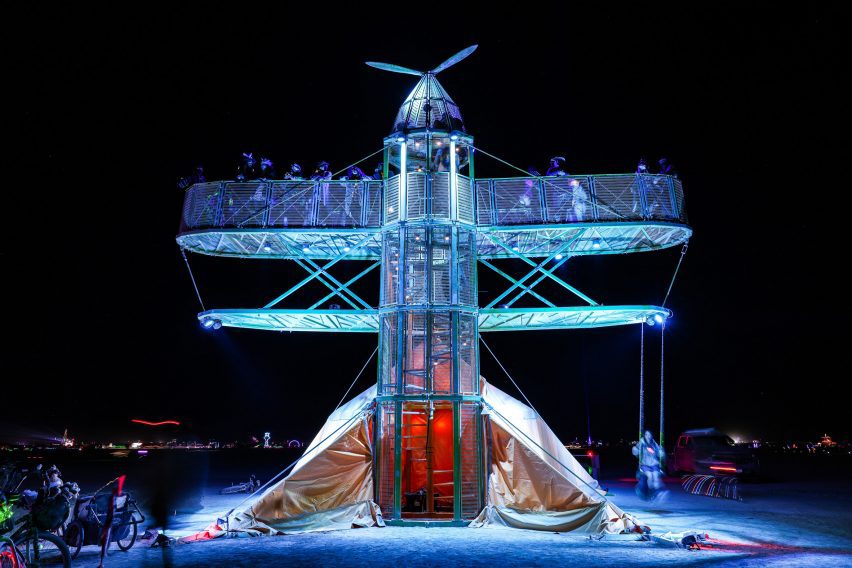 Blastoff by Weld Queen
Blastoff by Weld Queen Blastoff was built upon a small airstrip sculpture established during Burning Man 2019.
Placed adjacent to a line-up of pre-existing airplane seats, the tower resembled an airplane vertically blasting off into the sky, while its tail provided shelter from the heat.
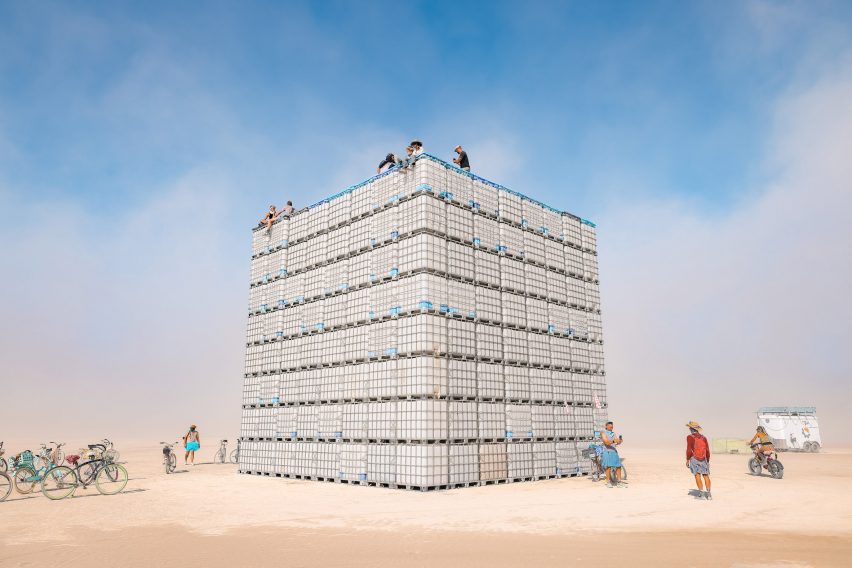
BitCube by Colin O' Donnell
BitCube by designer Colin O' Donnell was made of 224 standard IBC water containers stacked to form a large cube, which guests entered through a doorway to one side.
Each cube acted as a single pixel in a colourful light display, which made-up projections ranging from abstract shapes to minimalist representations of life.
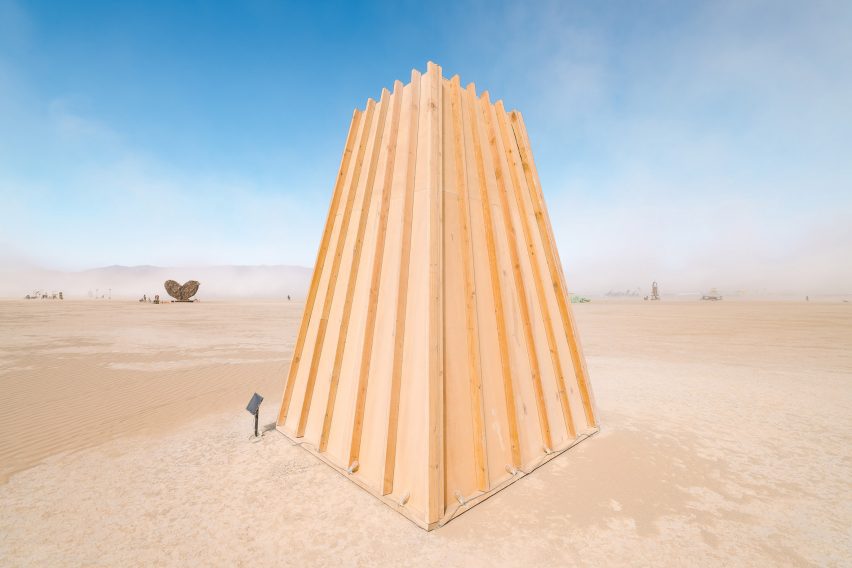
Love Pods by Josephine Declerck
The Love Pods by Josephine Declerck were obelisk-shaped wooden structures guests could enter through a circular door. Inside, a colourful light display offered a place for rest, safety and intimacy for Burners.
All photography is by Gurpreet Chawla unless otherwise stated.
Burning Man took place from Sunday, 27 August to Monday, 4 September in the Black Rock Desert of Nevada. See Dezeen Events Guide for an up-to-date list of architecture and design events taking place around the world